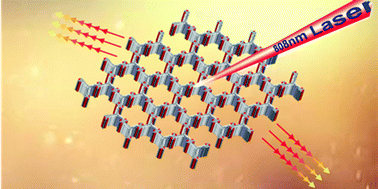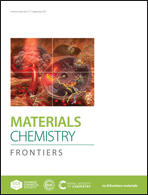Donor–acceptor based two-dimensional covalent organic frameworks for near-infrared photothermal conversion†
Abstract
Two 2D COFs containing both naphthalene diimides (NDIs) as an electron acceptor (A) and triphenylamine (PT-N-COF) or triphenylbenzene (PT-B-COF) as electron donors (D) were prepared successfully. The in-plane donor and acceptor units were connected through imine bonds with precise spatial distribution. The charge-transfer (CT) process induced from the D–A interactions in the 2D plane results in distinct near-infrared absorption properties. The unique structure modification in the skeleton of the COFs led to a great difference in photophysical properties and photothermal conversion properties. Compared to PT-B-COF, PT-N-COF containing triphenylamine as a donor displayed much stronger D–A interactions and CT effects, and thus exhibited obvious red-shift absorption in the NIR region. The photothermal conversion efficiency reached 66.4% in sharp contrast to 31.2% for PT-B-COF. EPR spectra verified the presence of unpaired electrons, which is consistent with the CT interaction in the ground state. The DFT molecular orbital simulation further revealed the mechanism of the photophysical properties and the CT process.

- This article is part of the themed collection: 2021 Materials Chemistry Frontiers HOT articles


 Please wait while we load your content...
Please wait while we load your content...